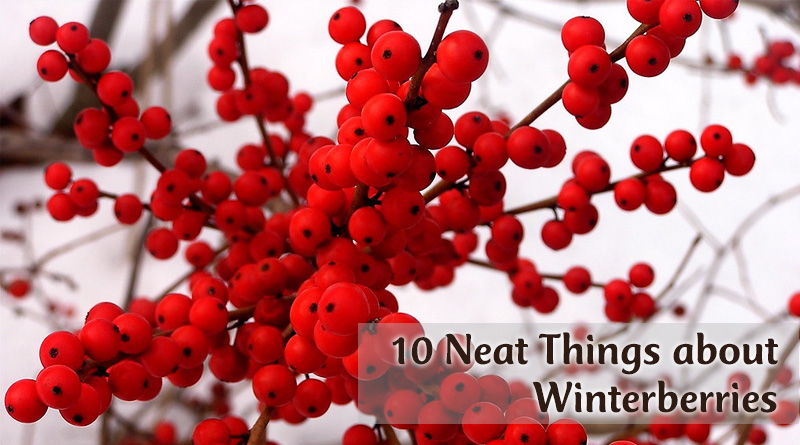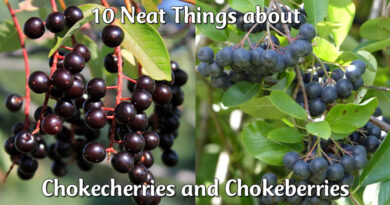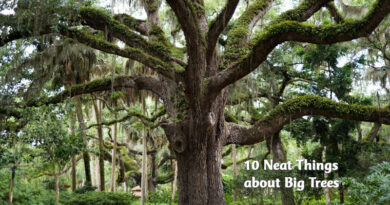10 Neat Things About Winter Berries

1. What’s a berry?
As you will know by now if you read 10 Neat Things frequently, only some berries are berries; the rest are drupes or aggregate fruits or multiple fruits. And bananas are berries, as well as pumpkins, peppers and eggplants. Botanically speaking, a berry is the fruit produced from the ovary of a single flower, with a fleshy pericarp or outer part. We’re not worried about that today, though; we’re simply looking at colourful berry things that stay on trees through winter.
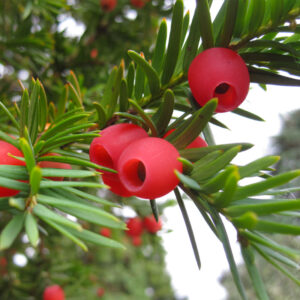
2. Yews.
The bright red things on this evergreen are actually cones. They are remarkable in producing only one seed; most cones contain several seeds. These berries last on the trees as long as the birds will let them through the winter. They are toxic to humans, though.
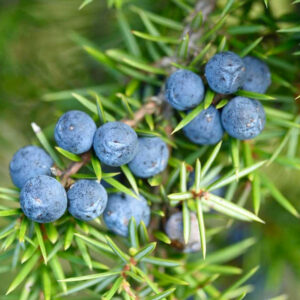
3. Juniper.
This is another evergreen with berry-like cones, this time in gorgeous dusky blue. These are tough little guys, taking from one to three years to mature. They are also edible, being used for flavour, particularly in gin and game meats. Exercise caution in growing these trees, though; some people are very allergic to the pollen.
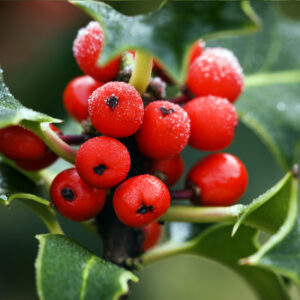
4. Holly.
This is an evergreen, for example Ilex aquifolium, except when it is not, for example Ilex verticillate, or winterberry. I. aquifolium isn’t hardy under Zone 5, so you’ll only find it in the florist’s in Alberta and Manitoba. Winterberry is, though. Both produce red berries that are slightly toxic to humans but beloved by birds. In fact, birds have dispersed far too many Ilex seeds along the west coast of North America, and now holly is outcompeting native species in forests.

5. Snowberry.
Symphocarpus occidentalis is known for its white berries, which are hard-shelled and crack delightfully when stepped on. Also called wolfberry, this is a native tree across much of Canada. It isn’t good for humans to eat, but the berry contains a lot of saponin, making it good for washing. It was used by Indigenous Canadians for washing hair and rubbed under armpits for antiperspirant.
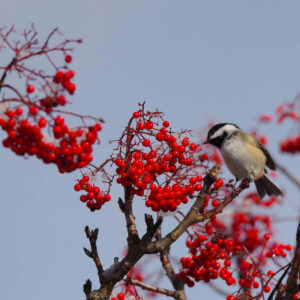
6. Mountain ash.
With brilliant red foliage in the fall, these trees continue to stand out in the winter landscape with bright red-orange berries. The berries are edible on Sorbus trees and are used in making dogberry jam in Newfoundland. By the way, these berries are pomes.

7. Sea buckthorn.
This is the tree with clusters of orange berries and silvery green, narrow foliage. It’s a very tough native of Eurasia and the berries are edible and very nutritious, which is why the government of the USSR focused on it to develop higher-yielding varieties during the cold war. More recently, Canadian companies like Solberry of Manitoba have been marketing sea buckthorn products for consumption.
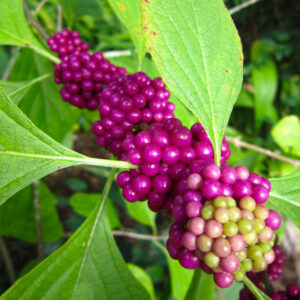
8. Beautyberry.
Callicarpa don’t grow in Alberta or Manitoba and only grow in very southerly regions of Ontario, but my gosh is it ever beautiful. The berries are mauve and cluster along the stems where the leaves attach. There is a chemical in it called callicarpenal, which is an insect repellent. You would grow the trees for the outstanding berries, though.
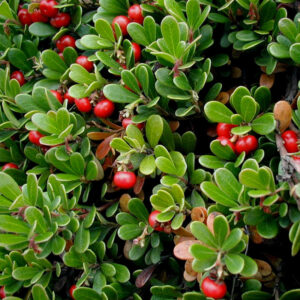
9. Bearberries.
This is a low-growing subshrub that is hardy way up in the arctic. They can be quite covered in red drupes, which the Blackfeet nation used as food and other Indigenous groups used in their kinnikinic, or smoking mixture. In fact, kinnikinic is another name for bearberries.
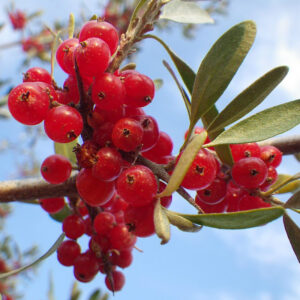
10. Buffaloberry.
Shepherdia is a cross-Canada tree with small red drupes. Western settlers used to make a sauce from the berries to go with buffalo meat, giving it its common name. First Nations peoples of British Columbia used to collect the berries as part of “Indian ice cream”; you crush buffaloberries with raspberries or other sweet berries then whip them to make a foam that you eat. Buffaloberries are compared in flavour to sweetened coffee.

